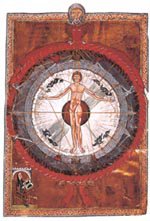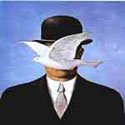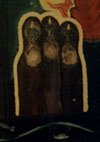 D.T. Suzuki's last words were: "Don't worry. Thank you! Thank you!" An introduction to his way of thinking can be found at the World Haiku Review. His small book, Introduction to Zen, is recommended. Photo of Dr. Suzuki's grave from World Haiku Review by Museki Abe of Tokyo.
D.T. Suzuki's last words were: "Don't worry. Thank you! Thank you!" An introduction to his way of thinking can be found at the World Haiku Review. His small book, Introduction to Zen, is recommended. Photo of Dr. Suzuki's grave from World Haiku Review by Museki Abe of Tokyo.
Thursday, March 09, 2006
Thank you, thank you.
 D.T. Suzuki's last words were: "Don't worry. Thank you! Thank you!" An introduction to his way of thinking can be found at the World Haiku Review. His small book, Introduction to Zen, is recommended. Photo of Dr. Suzuki's grave from World Haiku Review by Museki Abe of Tokyo.
D.T. Suzuki's last words were: "Don't worry. Thank you! Thank you!" An introduction to his way of thinking can be found at the World Haiku Review. His small book, Introduction to Zen, is recommended. Photo of Dr. Suzuki's grave from World Haiku Review by Museki Abe of Tokyo.
Tuesday, March 07, 2006
The End of the World: dream of "Dali"
 This more or less completes the ideas and themes which comprise this journal's original intentions. The other night I had a dream that I was driving into a city with "Dali" a Hindu Indian woman with whom I had been travelling every day to a city for lunch, over a bridge; she doing the driving. When I told
This more or less completes the ideas and themes which comprise this journal's original intentions. The other night I had a dream that I was driving into a city with "Dali" a Hindu Indian woman with whom I had been travelling every day to a city for lunch, over a bridge; she doing the driving. When I told  her of my fondness and affection for her, she said, "I'm dying now." This is a dream of the Anima, the female part of a masculine personality - the muse, which guides to prose, poetry and pictures. Death in a dream like this, where the character is arcane as in Tarot cards, generally means a change and a rebirth - a prelude. It was a suitable dream and a suitable time for this to end, as I'd received a yellow robe from my mother-in-law and been writing in it the last two years, then at this Christmas I received from my wife a beautiful long, green fleece robe, made by her. I have had four robes in the last 21 years of marriage - red for the first ten years, then dark blue for another seven years, yellow during the Awakening of this, now green. All marking significant passages and transitions. Like Jim Dine's Husband with His Left Arm on Fire (above) - robes take on a significant cast to the
her of my fondness and affection for her, she said, "I'm dying now." This is a dream of the Anima, the female part of a masculine personality - the muse, which guides to prose, poetry and pictures. Death in a dream like this, where the character is arcane as in Tarot cards, generally means a change and a rebirth - a prelude. It was a suitable dream and a suitable time for this to end, as I'd received a yellow robe from my mother-in-law and been writing in it the last two years, then at this Christmas I received from my wife a beautiful long, green fleece robe, made by her. I have had four robes in the last 21 years of marriage - red for the first ten years, then dark blue for another seven years, yellow during the Awakening of this, now green. All marking significant passages and transitions. Like Jim Dine's Husband with His Left Arm on Fire (above) - robes take on a significant cast to the quiet life - synchronicity, say shrinks; the quiet river which tumbles beneath the city - meaningful coincidence. Likewise, there have been dreams to mark these transitions. On the day before I married I dreamed that the Indian warrior Cochise came to my car and we two drove over a bridge, with him doing the driving. This dream with "Dali" was such a dream. One of the first entries in this journal (October, 2005) is miss3's dream of a woman dying, and rising from the death was the Sun God. The Sun God archetype appears throughout this artist's work, perhaps the greatest dreamer of all time, HIldegard von Bingen.
quiet life - synchronicity, say shrinks; the quiet river which tumbles beneath the city - meaningful coincidence. Likewise, there have been dreams to mark these transitions. On the day before I married I dreamed that the Indian warrior Cochise came to my car and we two drove over a bridge, with him doing the driving. This dream with "Dali" was such a dream. One of the first entries in this journal (October, 2005) is miss3's dream of a woman dying, and rising from the death was the Sun God. The Sun God archetype appears throughout this artist's work, perhaps the greatest dreamer of all time, HIldegard von Bingen.
Appendix 1: Pictures
 If you Google "Parthalon Flyingsnake DeCoursy," a name my kids helped make up, about 10 pages come up which interpret Surrealist paintings as dreams, much as they were conceived in the collective state of Unconscious
If you Google "Parthalon Flyingsnake DeCoursy," a name my kids helped make up, about 10 pages come up which interpret Surrealist paintings as dreams, much as they were conceived in the collective state of Unconscious in which these artists worked together and alone. (Or go to this Surrealist website and click on the pictures.) For example: two eggs - Man Ray, Magritte and Dali all had this dream and so did I and many others - a symbol of the New Creation in the Hindu, but not yet Awakened - pictured as a statue of Khrishna holding two eggs (wu chi - unhatched or unmanifest karma - later they will become two birds in a
in which these artists worked together and alone. (Or go to this Surrealist website and click on the pictures.) For example: two eggs - Man Ray, Magritte and Dali all had this dream and so did I and many others - a symbol of the New Creation in the Hindu, but not yet Awakened - pictured as a statue of Khrishna holding two eggs (wu chi - unhatched or unmanifest karma - later they will become two birds in a  tree, or yin and yang, the life force manifest in tai chi). This picture of man and bird above on the left relates to the famous picture with the Green Apple face - the Son of Man on the right. Here at left he has a white tie, implying an inner condition, while the spirit bird flies to the left of frame, also the direction of the inner condition. In Son of Man the tie is red, implying an outward manifestation of the same condition (consider this to be an expression
tree, or yin and yang, the life force manifest in tai chi). This picture of man and bird above on the left relates to the famous picture with the Green Apple face - the Son of Man on the right. Here at left he has a white tie, implying an inner condition, while the spirit bird flies to the left of frame, also the direction of the inner condition. In Son of Man the tie is red, implying an outward manifestation of the same condition (consider this to be an expression of wu chi and tai chi, and the moment of turning from the inner unmanifest condition to the outer condition of coming into the world at the date of these two paintings, 1964). This is discussed earlier at the beginning of these journals in the entry titled: Orange Monk: Salvador Dali's Dream of The Second Coming of Christ apparently as a Buddhist monk.
of wu chi and tai chi, and the moment of turning from the inner unmanifest condition to the outer condition of coming into the world at the date of these two paintings, 1964). This is discussed earlier at the beginning of these journals in the entry titled: Orange Monk: Salvador Dali's Dream of The Second Coming of Christ apparently as a Buddhist monk.
Appendix 2: Dreams
'I'd rather be dead than cool. - Kurt Cobain
 The richest dream I have ever had was of three ancient men in old, gray robes and wispy beards, kneeling in the pale light of an ancient Christian/Islamic temple, stone with large columns, like the Hagia Sophia or the Church of the Nativity. There was a swirling ball of light before them. I was told to keep my head down because I was in the House of God. (My children have found a very close equivalent in Magic: The Gathering cards drawn by
The richest dream I have ever had was of three ancient men in old, gray robes and wispy beards, kneeling in the pale light of an ancient Christian/Islamic temple, stone with large columns, like the Hagia Sophia or the Church of the Nativity. There was a swirling ball of light before them. I was told to keep my head down because I was in the House of God. (My children have found a very close equivalent in Magic: The Gathering cards drawn by  not know who he was, so I learned. I felt he resembled Yeats’ Aquarian, the Unicorn born to a prostitute in a garret in
not know who he was, so I learned. I felt he resembled Yeats’ Aquarian, the Unicorn born to a prostitute in a garret in  I was talking to a student in my office about a dream he was having of Andre Breton (here by Max Ernst). In the dream he saw 13 concentric circles and as he drew them with pen on paper to explain, the electricity in my computer started wiggling. I told him to stop but he was wrapped up in his drawing. When he got to the 13th inner circle all the electricity went out in the building and there was a large explosion. Outside was a big hole, maybe eight feet across and six feet deep. It came from a surge in electricity they said, but they didn’t know what caused it.
I was talking to a student in my office about a dream he was having of Andre Breton (here by Max Ernst). In the dream he saw 13 concentric circles and as he drew them with pen on paper to explain, the electricity in my computer started wiggling. I told him to stop but he was wrapped up in his drawing. When he got to the 13th inner circle all the electricity went out in the building and there was a large explosion. Outside was a big hole, maybe eight feet across and six feet deep. It came from a surge in electricity they said, but they didn’t know what caused it. In days gone by in the West, this journey into dreams was done by shamans, the one person in the tribe who could go into the unconscious and come out alive, bringing with her or him the goods of the psyche to show to his or her people. Anyone else, it should be noted, would risk madness. But without the shaman, the people were lost souls, lost in the material world, without access to the inner life.
 Shamans are usually female and in cultures where they are male, they are almost always males that dress as women. The she/male is the link to the feminine ocean; the land of the dead, the Unconscious. The she/male’s female nature allows her into the unconscious without danger and her warrior ability allows him to climb back out. Characteristically, the shaman is the tribe’s soothsayer, healer and dream interpreter. Very often they are called to the position by a voice from the Unconscious, an archetypal deity of the tribe. They also have special roles in ceremony. Winktes, she/male shamans in New World Indian tribes, enter a trance state to find the appropriate name for newborn babies, for example. In rural
Shamans are usually female and in cultures where they are male, they are almost always males that dress as women. The she/male is the link to the feminine ocean; the land of the dead, the Unconscious. The she/male’s female nature allows her into the unconscious without danger and her warrior ability allows him to climb back out. Characteristically, the shaman is the tribe’s soothsayer, healer and dream interpreter. Very often they are called to the position by a voice from the Unconscious, an archetypal deity of the tribe. They also have special roles in ceremony. Winktes, she/male shamans in New World Indian tribes, enter a trance state to find the appropriate name for newborn babies, for example. In rural
Needless to say, this role has disappeared in the West, but at the cost of intimate knowledge of the Unconscious. Not only is this a loss to everyone in the West, but it was also a loss to those who would be shamans. Many traditional shamans, like Tibetan monks and the Taoist hermits of
I have been listening to my own dreams and other peoples for 40 years. In the absence of shamans, here are some thoughts on dreams:
- You cannot have a productive dream life if you drink alcohol. (Daily drinking can short-circuit psychic life and inhibit REM sleep. Alcoholism, says one Zen Buddhist monk, has become a substitute for religion in the West.)
- Dreams accompany life. Coincidences related to dreams are important and are part of the dream and the life.